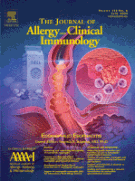Effects of β2-agonists on resident and infiltrating inflammatory cells - 01/09/11
Abstract |
β2-adrenergic receptors are present on inflammatory cells such as mast cells, monocytes, eosinophils, T-lymphocytes, and neutrophils implicated in the pathophysiology of respiratory disease. Short-acting β2-agonists (eg, albuterol) and long-acting β2-agonists (eg, salmeterol, formoterol) inhibit cell activation, inflammatory mediator release, and cell recruitment and survival mechanisms in vitro, with evidence of cellular specificity in response. In some cases, these effects can be observed in vivo, particularly with the long-acting agents. Reductions in inflammatory cell numbers, activation status in airway tissue, and inflammatory markers in sputum, bronchoalveolar lavage fluid, and blood have been reported after administration of clinical doses of salmeterol and formoterol. The inflammatory cell inhibitory activity of β2-agonists is increased in the presence of corticosteroids, resulting in additive and/or synergistic effects on mediator release, adhesion molecule expression, and cellular proliferation. In vivo, the combination of long-acting β2-agonist and corticosteroid exhibits an anti-inflammatory effect greater than that of the agonist alone, as well as a reduction in airway vascularity, a component of remodeling, that corticosteroids alone cannot produce. (J Allergy Clin Immunol 2002;110:S282-90.)
Le texte complet de cet article est disponible en PDF.Vol 110 - N° 6PB
P. S282-S290 - décembre 2002 Retour au numéroBienvenue sur EM-consulte, la référence des professionnels de santé.
L’accès au texte intégral de cet article nécessite un abonnement.
Déjà abonné à cette revue ?

